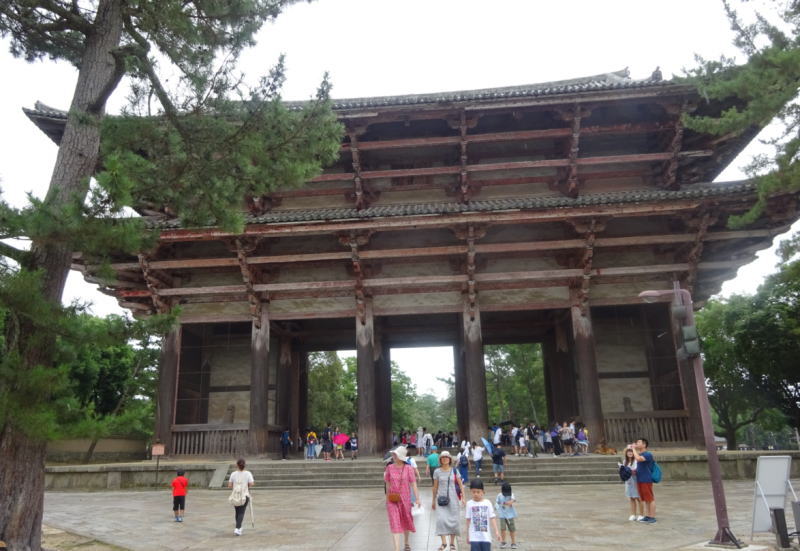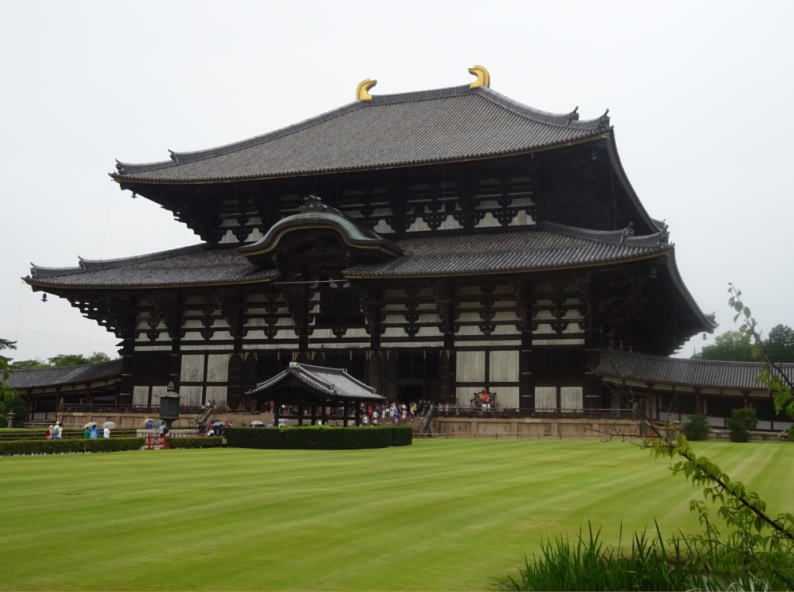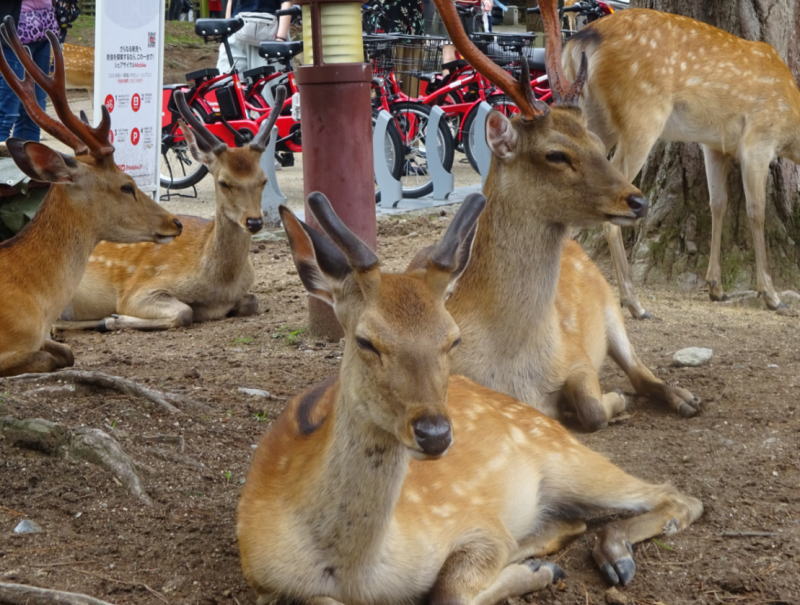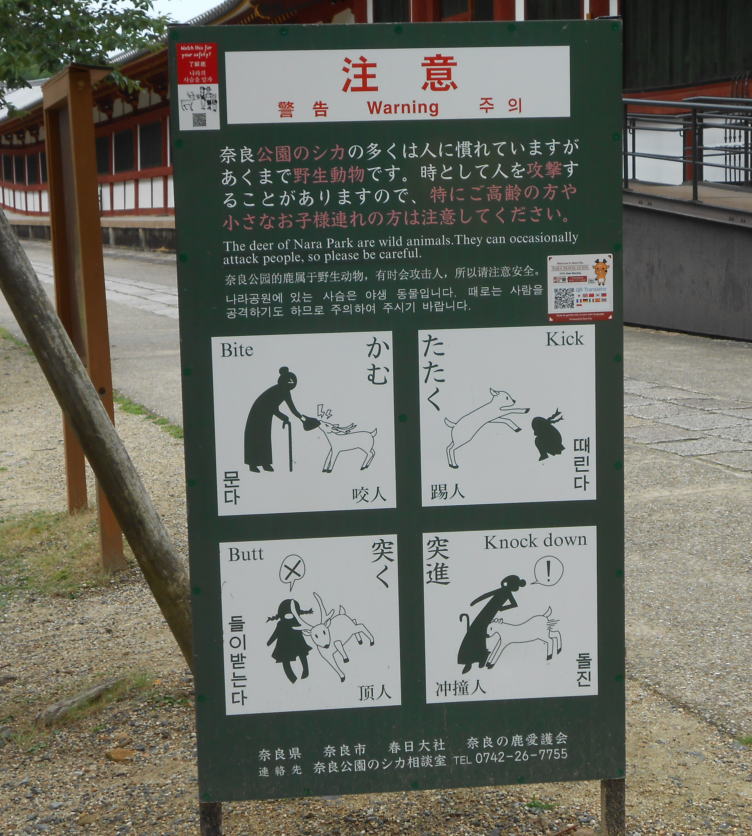
|

|
Last update October 13, 2022
東大寺
|
幾多の試練を乗り越えた「古都奈良の文化財」
平成10年に世界文化遺産として登録。
Listed as a World Cultural Heritage Site in 1998, the Temple has a Long History of Surviving a Series of Wartime Destruction.
東大寺の名前の由来
 あんた知ってた~?東大寺は昔から「東大寺」って呼ばれてたわけじゃないんだって。昔は「金鐘寺(きんしょうじ)」って言ってさ、聖武天皇が皇太子の基(もとい)の菩提を弔うために建てたらしいわ。神亀5年(728年)のことよ。
あんた知ってた~?東大寺は昔から「東大寺」って呼ばれてたわけじゃないんだって。昔は「金鐘寺(きんしょうじ)」って言ってさ、聖武天皇が皇太子の基(もとい)の菩提を弔うために建てたらしいわ。神亀5年(728年)のことよ。 それから天平13年(741年)になると、聖武天皇が「国分寺・国分尼寺建立の詔」っていうのを出して、全国に僧寺と尼寺をたてることにしたのね。この天皇は仏教に熱心な人だったらしいわ。そのときにこの金鐘寺が大和の国の国分寺に充てられたってわけ。やっぱりさ、国分寺になったら名前も変えたほうがいいじゃない?てなことで、国分寺になったので「金光明寺」って呼ばれるようになったわけ。
それから天平13年(741年)になると、聖武天皇が「国分寺・国分尼寺建立の詔」っていうのを出して、全国に僧寺と尼寺をたてることにしたのね。この天皇は仏教に熱心な人だったらしいわ。そのときにこの金鐘寺が大和の国の国分寺に充てられたってわけ。やっぱりさ、国分寺になったら名前も変えたほうがいいじゃない?てなことで、国分寺になったので「金光明寺」って呼ばれるようになったわけ。 それで、いつから「東大寺」になったかって?なんでもさ、正倉院ってところに納められている文書とかに「東大之寺」って名前が出てくるらしいわ。でさ、ここの有名な大仏さんがあるじゃない?この大仏さんが作られて、大仏殿(大仏さんの家)が建てられて大伽藍(だいがらん)として再編成されてから「平城京の東に建つ大きな寺」っていう意味で「ひむがしのおおてら」と呼ばれるようになったのが「東大寺」の名前の由来ってわけね。
それで、いつから「東大寺」になったかって?なんでもさ、正倉院ってところに納められている文書とかに「東大之寺」って名前が出てくるらしいわ。でさ、ここの有名な大仏さんがあるじゃない?この大仏さんが作られて、大仏殿(大仏さんの家)が建てられて大伽藍(だいがらん)として再編成されてから「平城京の東に建つ大きな寺」っていう意味で「ひむがしのおおてら」と呼ばれるようになったのが「東大寺」の名前の由来ってわけね。The Origin of the Name
 Later in 741, the emperor issued "the Imperial Edict to Construct Provincial Monasteries and Convents", in which the temple was designated as the Monastery of the Province of
Later in 741, the emperor issued "the Imperial Edict to Construct Provincial Monasteries and Convents", in which the temple was designated as the Monastery of the Province of  It was not until the Great Buddha Statue was built at this location that the temple began to be known by the present name of "
It was not until the Great Buddha Statue was built at this location that the temple began to be known by the present name of "The



